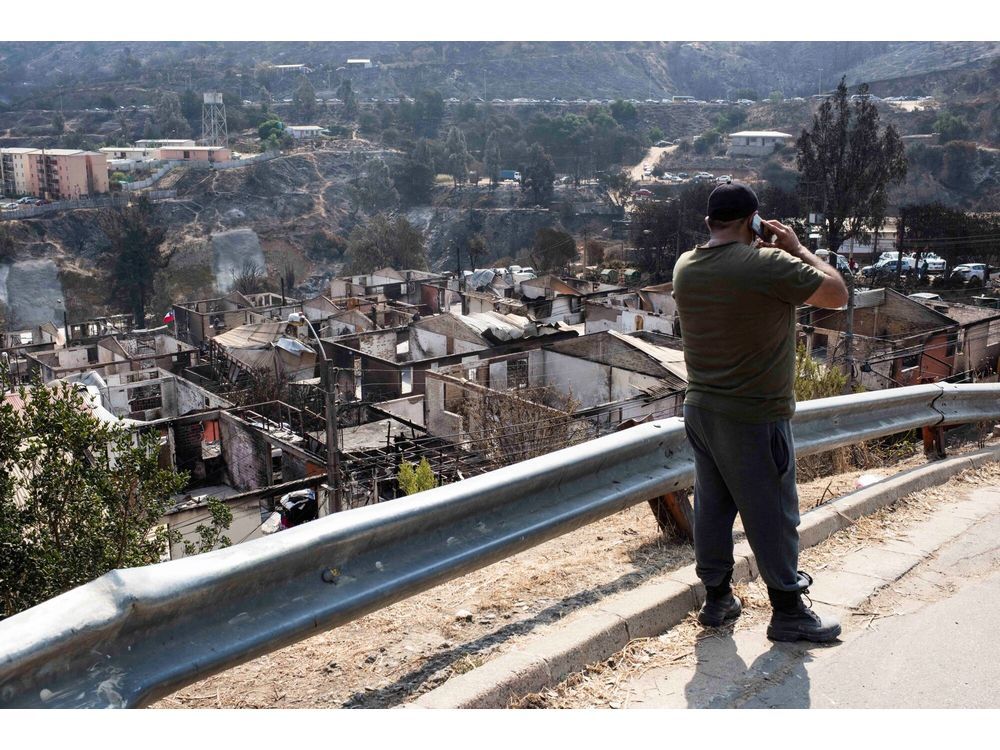
Article content
(Bloomberg) —
The deadly fires across Chile that killed at least 130 people and sent air quality levels into dangerous territory are just another example of how weather and climate can raise risks around the world, said Glory Dolphin Hammes, chief executive of Swiss-based IQAir’s North American division.Firefighters in the region have most of the blazes under control but drifting smoke lowered air quality across Chile and parts of neighboring Argentina earlier this week. Wildfire smoke contains a mixture of pollutants, including particulate matter, carbon monoxide, nitrogen oxides, and volatile organic compounds, she said.
Article content
“These smoke events are becoming more common due to climate change, which contributes to the increasing frequency and intensity of wildfires,” Dolphin Hammes said. “Factors such as rising temperatures, prolonged droughts, stronger El Niños, and changes in precipitation patterns create conditions conducive to wildfires.”Last year, massive fires across Canada turned skies in New York City and along the East Coast orange as smoke drifted south. Ongoing fires across Africa are also ruining atmospheric quality. The worst air in the world on Friday was in Accra, Ghana, according to IQAir’s tracking website.
Chile has heat waves sending temperatures to their third-highest levels in more than 100 years, and the country is in the midst of a years long megadrought, Dolphin Hammes said. In addition, an ongoing strong El Niño in the equatorial Pacific has spread fierce winds throughout the region that help the fires and smoke to spread.
In other weather news:
Tropics: Tropical Cyclone 12 is wandering through Vanuatu east of Australia at tropical storm strength. It will bring heavy rain, rough surf and winds.
Snow: Forecasters are watching a storm that has the potential to dump snow across the Northeast and Midwest next week.
Share this article in your social network